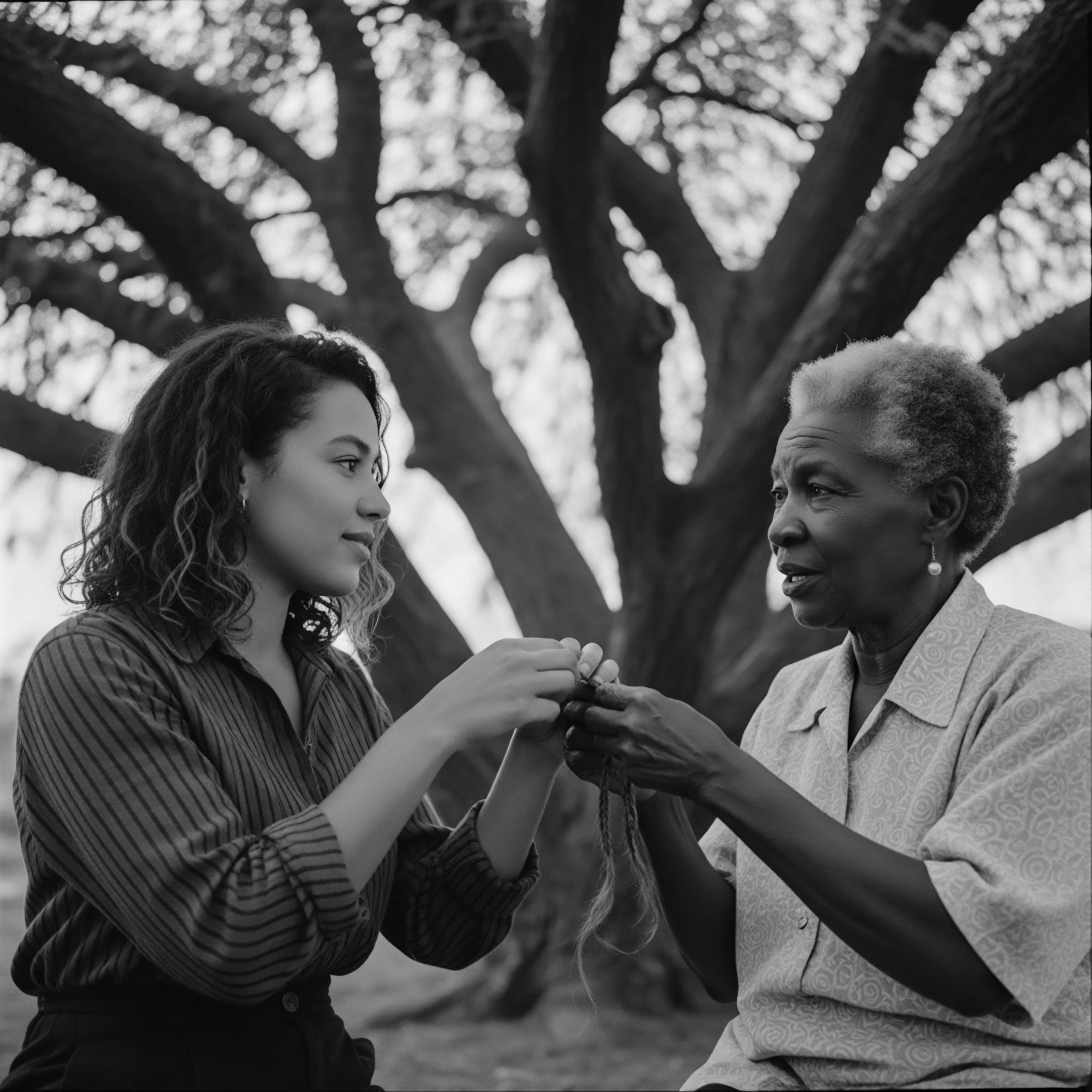
Fundamentals
The concept of African Hair Practices, at its core, represents a profound and ancient dialogue between human ingenuity and the natural world, particularly as it pertains to the unique biological characteristics of textured hair. This term, in its simplest expression, encompasses the vast and varied traditional methods, rituals, and philosophies that have guided the care, styling, and cultural presentation of hair across the African continent and within its global diaspora for millennia. It is an explanation of ancestral wisdom, a living library etched into the very strands that crown individuals, carrying stories of lineage, community, and spirit. From the earliest human settlements, the adornment and tending of hair were never mere acts of superficial beautification; they were deeply integrated into the fabric of daily life, societal structure, and spiritual belief systems.
This initial understanding of African Hair Practices begins with acknowledging hair as a potent symbol. In pre-colonial African societies, a person’s hairstyle could convey a wealth of information ❉ their age, marital status, social standing, tribal affiliation, religious devotion, and even their occupation. It was a visual language, spoken through intricate patterns, adorned with natural elements, and maintained with a reverence that recognized hair as a conduit to the divine, the most elevated part of the body connecting individuals to the spiritual realm.
The delineation of these practices reveals a heritage where care was communal, often involving hours of shared time, fostering bonds within families and across generations. This collective engagement transformed hair maintenance into a social ritual, a shared experience of identity formation and cultural transmission.
The explication of African Hair Practices also touches upon the elemental biology of textured hair itself. Characterized by its unique spiral-shaped curls, often appearing dense and voluminous, this hair type is believed to be an evolutionary adaptation, offering protection from intense ultraviolet radiation and promoting scalp aeration in warm climates. The historical understanding of this hair type informed early care methods, which focused on nurturing its inherent qualities.
African Hair Practices are a living testament to ancestral wisdom, where hair serves as a profound symbol of identity, community, and spiritual connection, deeply intertwined with the unique biology of textured hair.
The specification of these foundational practices reveals a deep connection to the earth and its offerings. Ancient communities relied on a diverse array of natural ingredients and tools, long before the advent of modern cosmetology. These substances were not chosen arbitrarily; their selection was grounded in generations of empirical observation and inherited knowledge concerning their nourishing and protective properties for textured hair.
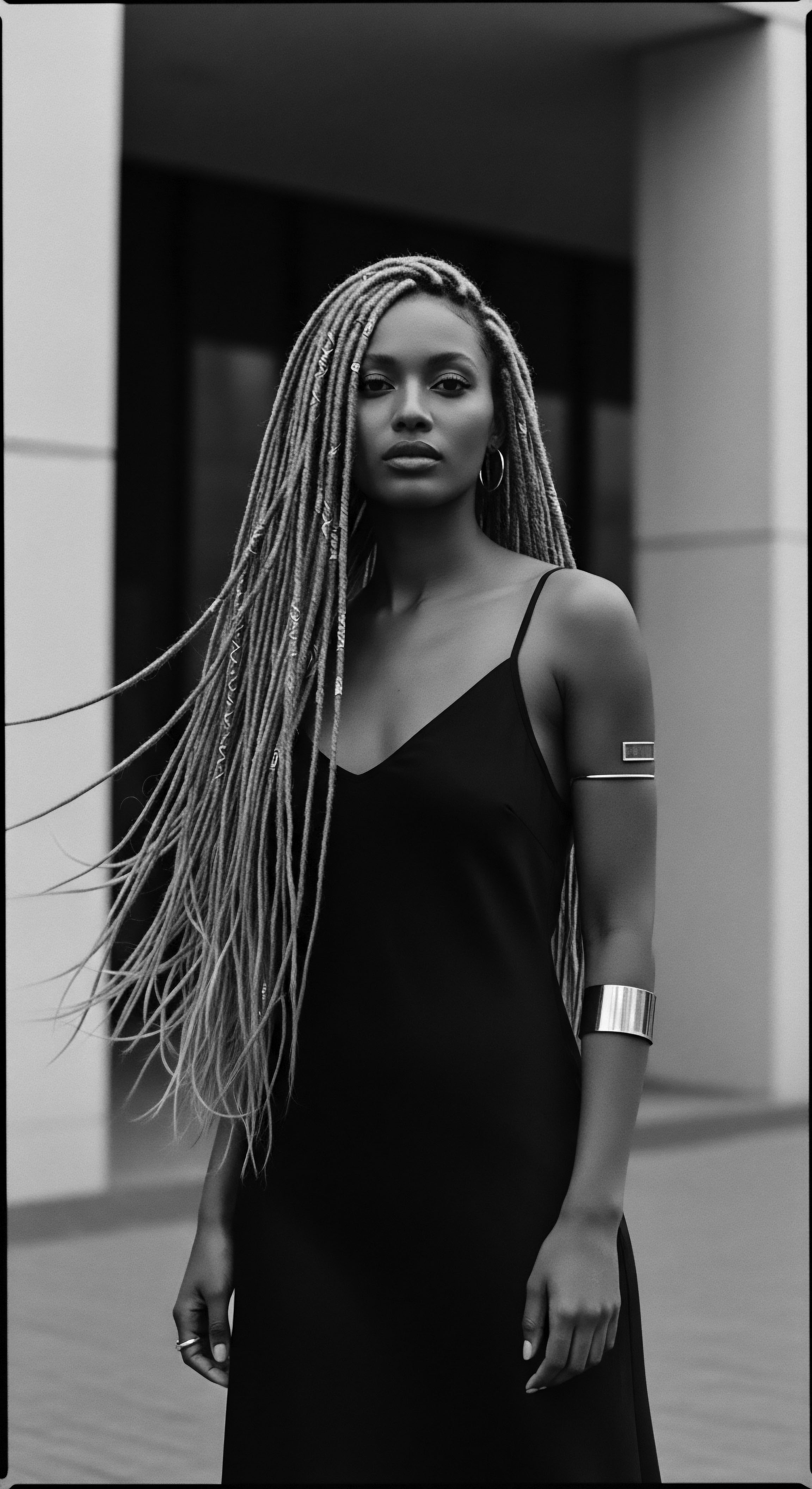
Ancient Echoes ❉ Ingredients and Instruments of Care
The earliest forms of African Hair Practices involved the skillful utilization of indigenous botanicals and handcrafted implements. These tools and materials were not just functional; they held cultural meaning, reflecting the artistic expression and resourcefulness of the communities that fashioned them.
- Shea Butter ❉ Derived from the nuts of the African shea tree, this rich emollient has been a cornerstone of hair care for centuries, prized for its deep moisturizing and protective qualities, shielding hair from environmental stressors and maintaining its suppleness.
- Baobab Oil ❉ Extracted from the seeds of the majestic baobab tree, this oil, often called the “tree of life,” offered a light yet potent conditioning agent, believed to support scalp health and hair resilience.
- African Black Soap ❉ Traditionally made from plantain skins, cocoa pods, and shea tree bark, this cleansing agent provided a gentle yet effective means of purifying the scalp and hair, respecting its natural oils.
- Wooden Combs ❉ Hand-carved from various hardwoods, these combs, often with wide-set teeth, were designed to navigate the unique structure of textured hair with minimal breakage, many adorned with symbolic carvings that spoke of tribal identity or spiritual beliefs.
- Hair Pins and Adornments ❉ Shells, beads, cowrie shells, and metals were frequently incorporated into hairstyles, serving not only as decoration but also as markers of social status, wealth, or rites of passage.
The historical roots of these practices are visible in archaeological evidence and ancient artistic depictions. For instance, archaeological finds from ancient Egypt and the Kingdom of Kush reveal sophisticated hair artistry, with wigs and natural hair styled into intricate braids and coiled forms, often adorned with precious materials, signifying wealth, religious devotion, and societal standing. The Nubian people, particularly in the Kingdom of Kush, emphasized natural hair textures, styling hair in curls or tightly bound rows, a testament to their distinct beauty standards. This deep past confirms that African Hair Practices are not a recent phenomenon but a continuum of wisdom stretching back thousands of years.
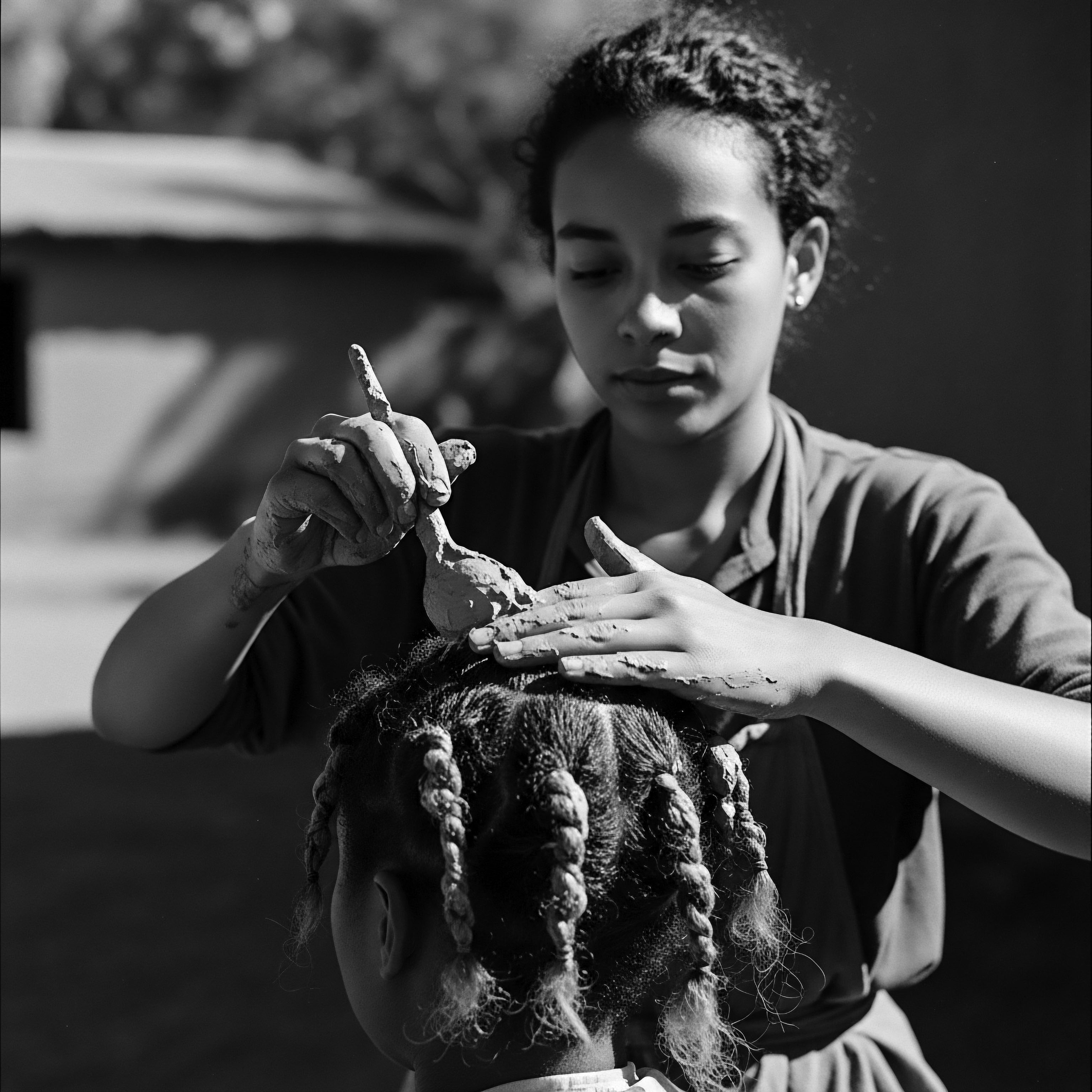
Intermediate
Moving beyond the foundational tenets, the intermediate meaning of African Hair Practices delves into how these ancestral traditions have been meticulously passed down through generations, adapting and evolving while retaining their profound cultural resonance for textured hair across the global diaspora. This section clarifies the continuity of inherited knowledge, illustrating how traditional care rituals and styling methods have remained vibrant, even as they have navigated the complexities of historical change and migration. The interpretation here focuses on the practical application of this heritage, demonstrating how African Hair Practices function as living systems of care, community, and communication.
The elucidation of these practices highlights their inherent adaptability. While the core principles of nurturing textured hair remain constant—prioritizing moisture, scalp health, and protective styling—the specific manifestations have shifted with new environments and societal pressures. The legacy of communal hair care, where mothers, daughters, and friends gather to braid and tend to hair, persists as a powerful bond, reinforcing cultural identity and strengthening social ties. This shared activity transforms a routine into a cherished ritual, a space for storytelling, mentorship, and the quiet transmission of techniques that honor the unique needs of coiled and curly hair.
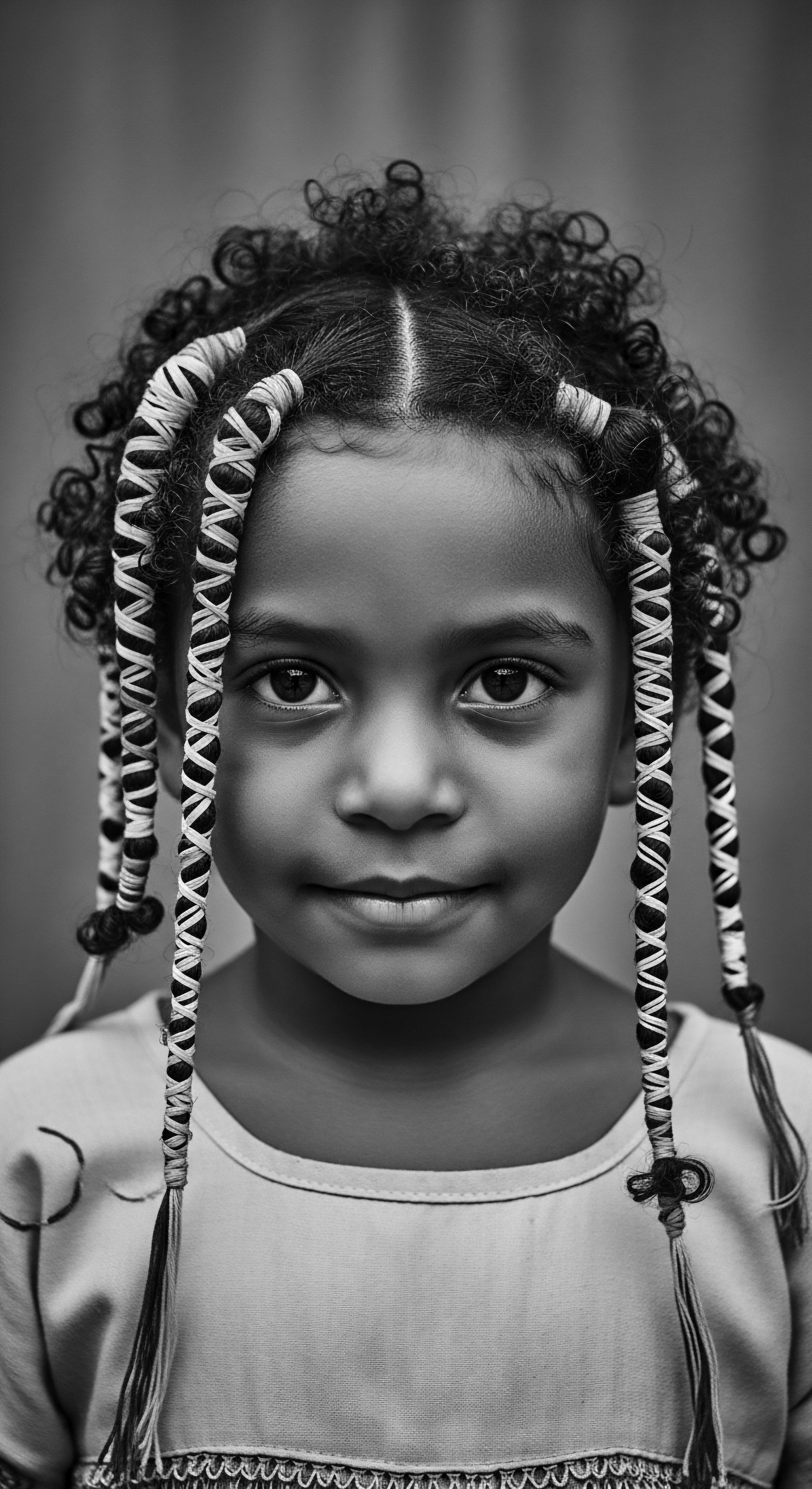
The Tender Thread ❉ Continuity and Adaptation
The African diaspora, a consequence of the transatlantic slave trade, represents a pivotal period where African Hair Practices faced immense challenges yet demonstrated remarkable resilience. Stripped of their tools, traditional ingredients, and the communal spaces for hair care, enslaved Africans found ways to preserve aspects of their hair heritage, often as a silent act of resistance against dehumanization. The forced shaving of heads upon capture was a deliberate attempt to erase identity and sever ties to homeland, yet the spirit of these practices endured.
A powerful historical example of this resilience and adaptation is the documented use of cornrows (also known as “canerows” in some regions of the diaspora) as a means of encoding messages and maps for escape during the transatlantic slave trade. In colonial Colombia, for instance, enslaved Africans ingeniously braided intricate patterns into their hair that served as routes to freedom, signaling safe paths through treacherous terrain or indicating where provisions might be found. Some cornrow patterns, such as “departe,” a style of thick braids tied into buns, specifically communicated plans for escape.
This remarkable instance of covert communication underscores the profound significance of hair beyond mere aesthetics; it became a vital tool for survival and liberation, a silent language of defiance embedded within a hairstyle. This oral history, preserved within Afro-Colombian communities, stands as a powerful testament to the ingenuity and enduring spirit of African Hair Practices as instruments of resistance and cultural preservation.
Cornrows, far from being solely decorative, served as intricate maps and coded messages for freedom during the transatlantic slave trade, a testament to the profound resilience and communicative power embedded within African Hair Practices.
The practice of braiding itself, originating over 5000 years ago in African cultures, evolved to serve both protective and communicative purposes. Braids shield delicate textured hair from environmental damage and tangling, promoting moisture retention and reducing breakage. This functional aspect, combined with their symbolic depth, cemented their place as a cornerstone of African Hair Practices.
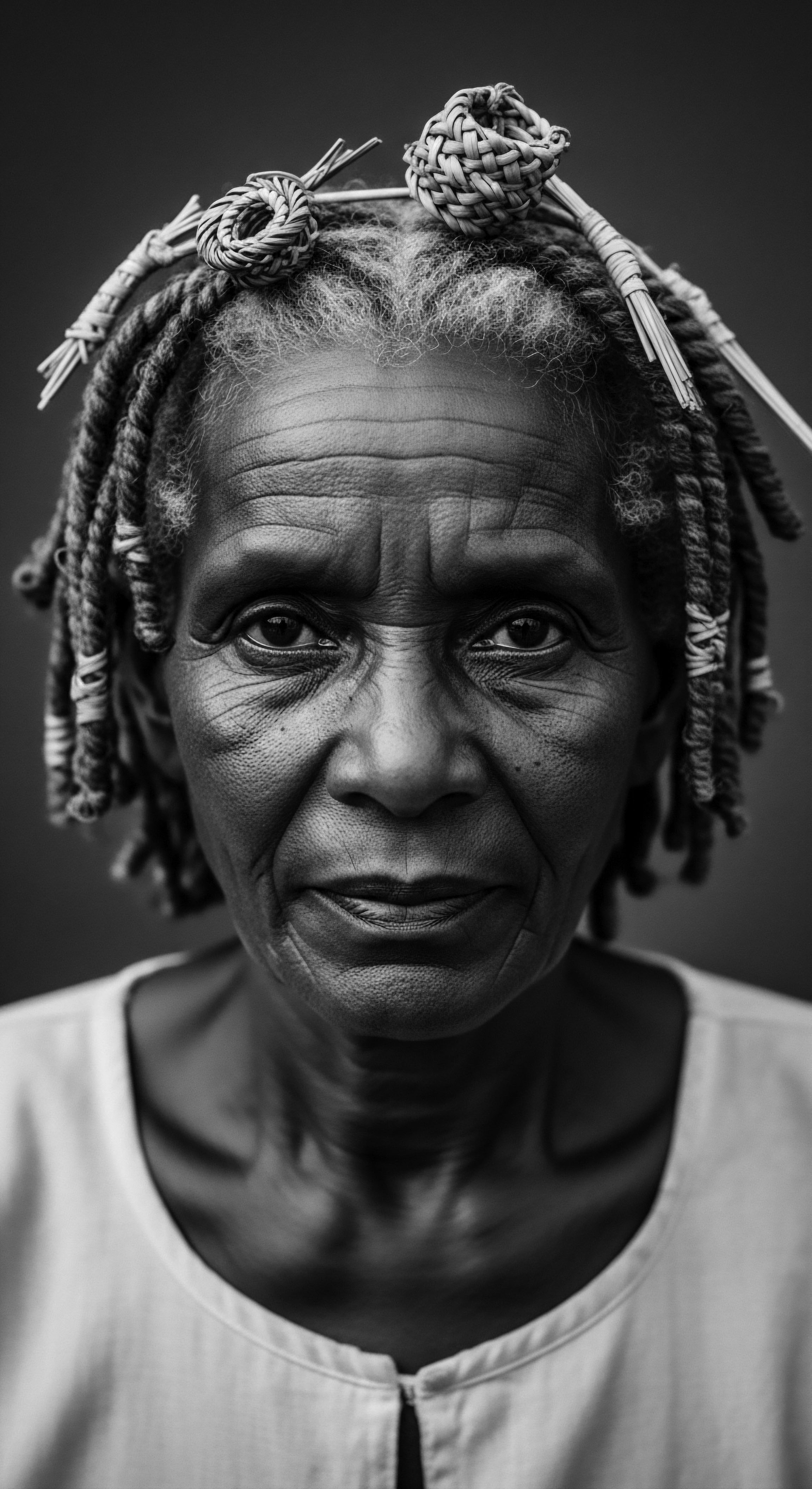
Evolving Rituals and Protective Styling
The care for textured hair, historically and presently, prioritizes gentle handling and nourishment. The specific delineation of these practices involves understanding the unique follicular structure of coiled hair, which can be more prone to dryness and breakage due to its elliptical shape and fewer cuticle layers that lay flat. Traditional methods intuitively addressed these vulnerabilities.
| Traditional Practice Sectioning Hair |
| Description and Heritage Meaning Dividing hair into smaller, manageable portions for ease of cleansing, detangling, and styling. This method prevented damage and honored the hair's natural growth patterns. |
| Modern Hair Care Link Employed in contemporary textured hair routines for detangling, product application, and protective styling (e.g. wash-and-go methods, braiding). |
| Traditional Practice Oiling and Sealing |
| Description and Heritage Meaning Applying natural oils (e.g. shea butter, coconut oil, palm oil) to the scalp and strands to moisturize, protect, and add luster. Often done with warm hands to aid absorption. |
| Modern Hair Care Link The use of natural oils and butters remains a core tenet of modern textured hair care for moisture retention and scalp health, often referred to as the "LOC" (liquid, oil, cream) method. |
| Traditional Practice Protective Styling (Braids, Twists, Locs) |
| Description and Heritage Meaning Creating styles that tuck away hair ends and minimize manipulation, safeguarding hair from environmental stressors and reducing breakage. These styles carried deep cultural meanings. |
| Modern Hair Care Link Recognized as essential for length retention and health of textured hair, minimizing daily styling damage and promoting growth. |
| Traditional Practice Communal Care |
| Description and Heritage Meaning Hair grooming as a social activity, strengthening family and community bonds. Elders shared wisdom, and younger generations learned techniques. |
| Modern Hair Care Link Modern braiding salons and natural hair meetups serve as contemporary spaces for community, shared knowledge, and cultural affirmation, echoing ancestral gatherings. |
| Traditional Practice The enduring principles of African Hair Practices demonstrate a timeless wisdom for nurturing textured hair, bridging ancient traditions with current wellness approaches. |
The ongoing adaptation of these practices is also visible in the evolution of hair adornments. Headwraps, for instance, initially served practical purposes like protecting hair from harsh conditions, particularly during slavery, but quickly transformed into symbols of dignity, resilience, and cultural heritage, asserting identity against imposed European beauty standards. This evolution continues today, with headwraps remaining a popular and expressive element of African Hair Practices across the diaspora.
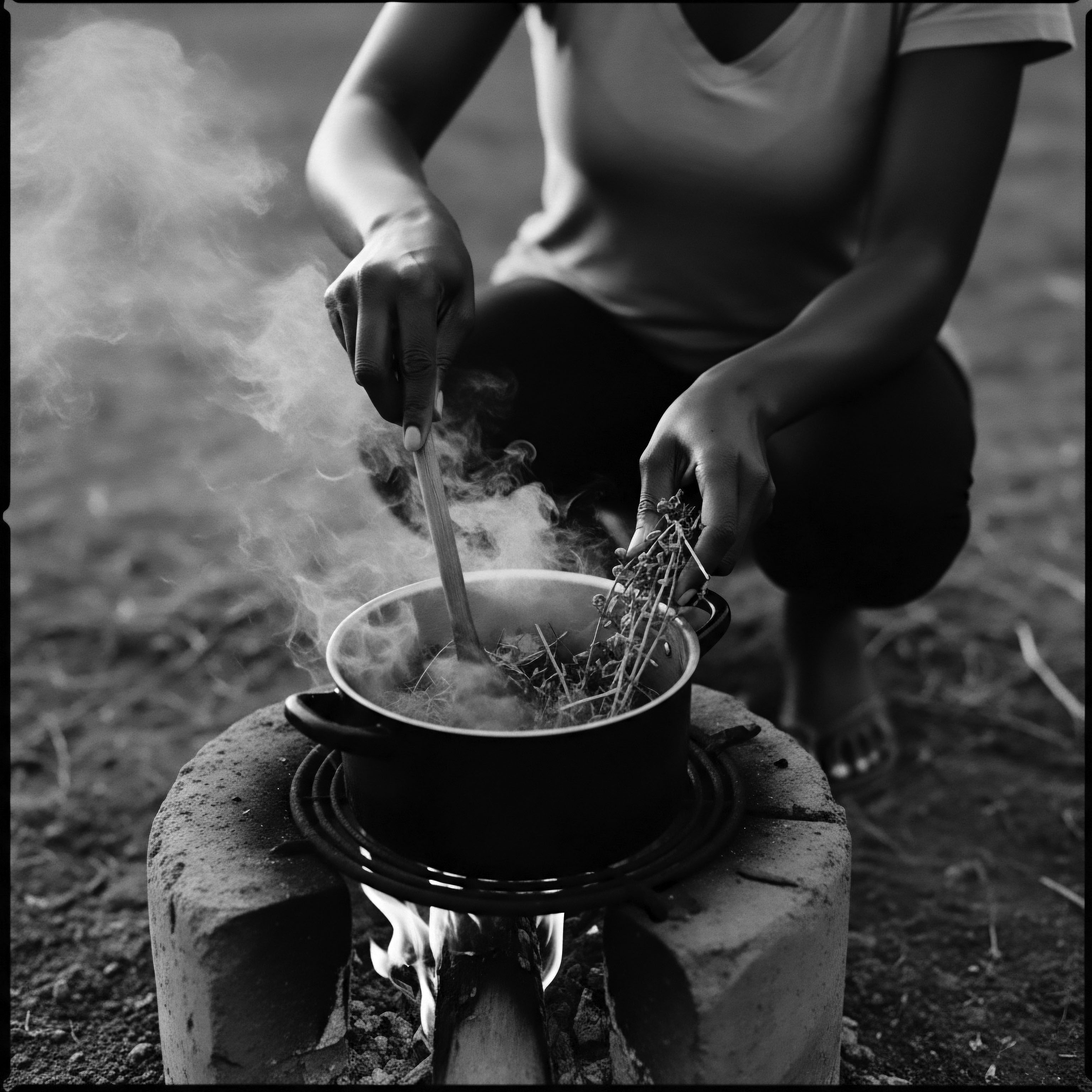
Academic
The advanced definition of African Hair Practices transcends a mere description of techniques; it is a comprehensive interpretation of the profound interplay between elemental biology, cultural anthropology, historical oppression, and the enduring human spirit, particularly within the context of textured hair, Black hair, and mixed-race hair heritage. From an expert perspective, African Hair Practices represent a dynamic, epistemic system of knowledge and embodied wisdom, continually shaped by ancestral legacies, diasporic experiences, and the ongoing quest for self-determination. This is not simply about hair care; it is a deeply analytical exploration of how hair functions as a central locus for identity negotiation, cultural transmission, and resistance against homogenizing forces. The significance of these practices lies in their capacity to serve as a tangible, living archive of Black and mixed-race experiences, a profound statement of continuity and resilience.
The clarification of African Hair Practices at this level necessitates an understanding of their anthropological depth. In many pre-colonial African societies, hair was a sophisticated communication system, often conveying information about a person’s marital status, age, religion, ethnic identity, wealth, or social rank. The Yoruba people, for example, intricately braided hair to send messages to the gods, viewing the head as the most sacred part of the body and hair as a direct conduit to the spiritual realm.
This profound connection to the divine elevates hair care beyond routine maintenance to a sacred ritual, a deliberate act of reverence and spiritual alignment. The historical evidence, including temple carvings and relief sculptures from ancient Egypt and the Kingdom of Kush, illustrates how these intricate hairstyles were not only aesthetic statements but also expressions of power, spirituality, and social cohesion.
The scientific understanding of textured hair further enriches this interpretation. Afro-textured hair, with its unique helical structure, presents specific physiological characteristics that demand tailored care. Its elliptical follicle shape, coupled with a greater number of twists and turns along the hair shaft, results in a more fragile cuticle layer that is prone to dryness and breakage. The ancestral practices, observed through generations, developed intuitive solutions to these biological realities.
For instance, the consistent use of natural oils and butters, like shea butter, served as emollients to seal moisture into the hair shaft, mitigating dryness inherent to its structure. Protective styles, such as braids and locs, minimized manipulation and exposure, thereby reducing mechanical damage and promoting length retention. This intersection of biological understanding and inherited practical wisdom highlights the scientific validity embedded within traditional African Hair Practices.
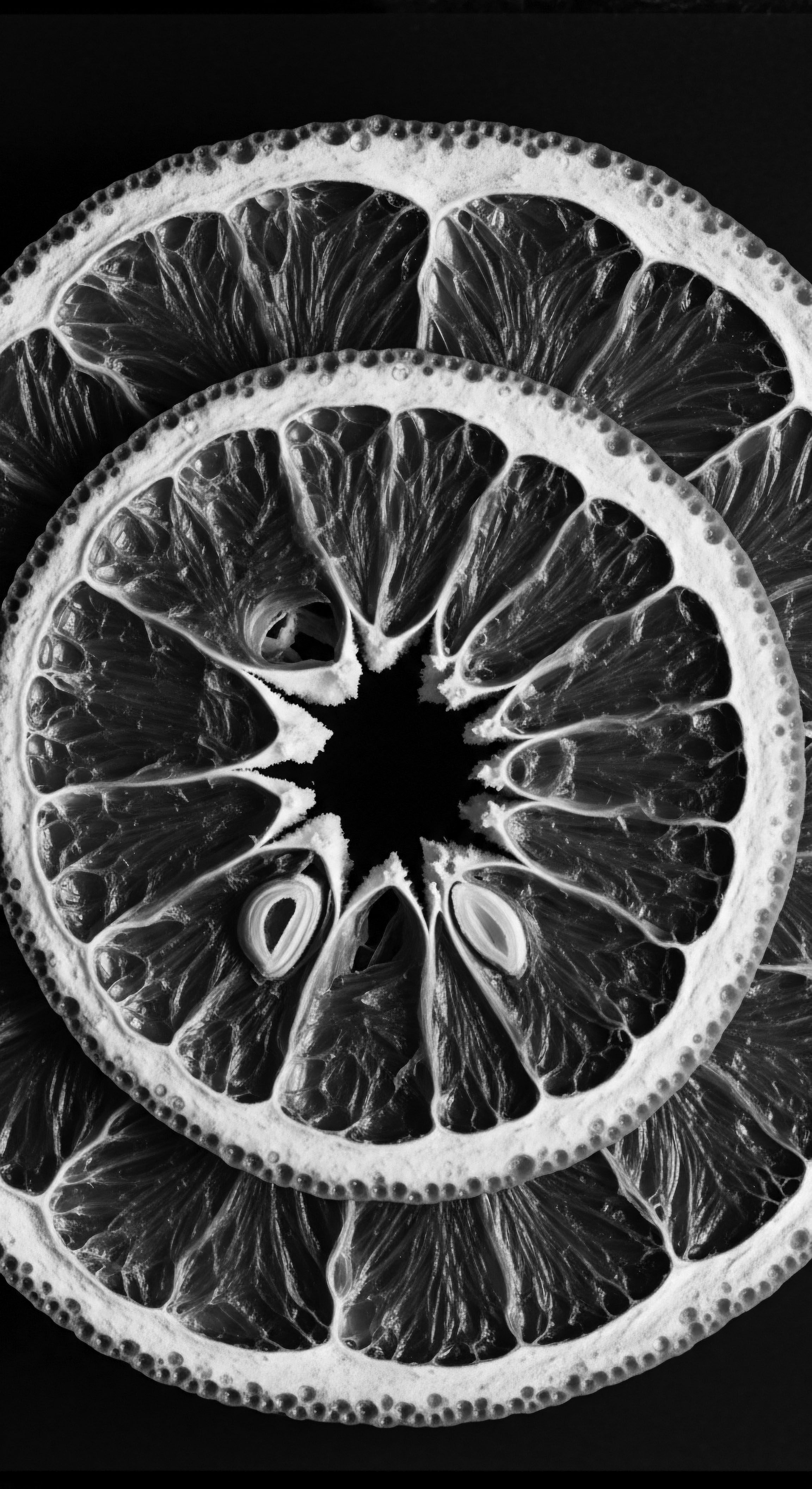
The Unbound Helix ❉ Identity, Resistance, and Evolution
The journey of African Hair Practices through the transatlantic slave trade and colonialism provides a critical lens for understanding their enduring meaning. The systematic shaving of enslaved Africans’ heads was a deliberate, violent act of cultural erasure, intended to strip them of their identity and connection to their heritage. Despite this profound assault, hair became a site of profound resistance.
The aforementioned example of cornrows being used to map escape routes in colonial Colombia stands as a testament to the ingenuity and indomitable spirit of enslaved Africans, transforming a symbol of beauty into a clandestine tool of liberation. This historical context is vital for appreciating the depth of meaning that contemporary African Hair Practices carry, representing a continuous thread of defiance and self-affirmation.
The evolution of African Hair Practices in the diaspora is also marked by significant social and political movements. The mid-20th century saw the resurgence of natural hairstyles, particularly the Afro, during the Civil Rights and Black Power movements. This period marked a powerful rejection of Eurocentric beauty standards that had long pathologized coiled hair, asserting Black identity and pride.
Icons like Angela Davis popularized the Afro, transforming it into a political statement and a symbol of empowerment. The modern natural hair movement, building on these historical foundations, continues to celebrate the diverse textures of Black and mixed-race hair, fostering a sense of collective identity and challenging systemic discrimination.
African Hair Practices are a living dialogue between ancient biological adaptations and cultural resilience, embodying a continuous, profound resistance against historical forces of erasure.
From a corporate and advanced research perspective, understanding African Hair Practices is not merely about market trends; it involves recognizing the deep-seated cultural value that drives consumer choices and shapes identity. The multi-billion dollar Black hair care industry, while facing challenges of ownership representation (with Black entrepreneurs accounting for a small percentage of total product ownership), is a testament to the persistent demand for products and services that cater specifically to textured hair. This economic reality underscores the enduring cultural significance of these practices, highlighting a powerful consumer base deeply invested in products that honor their heritage and support their hair’s unique biological needs. Future innovations in hair science and product development must be grounded in this rich historical and cultural understanding to be truly effective and ethically resonant.
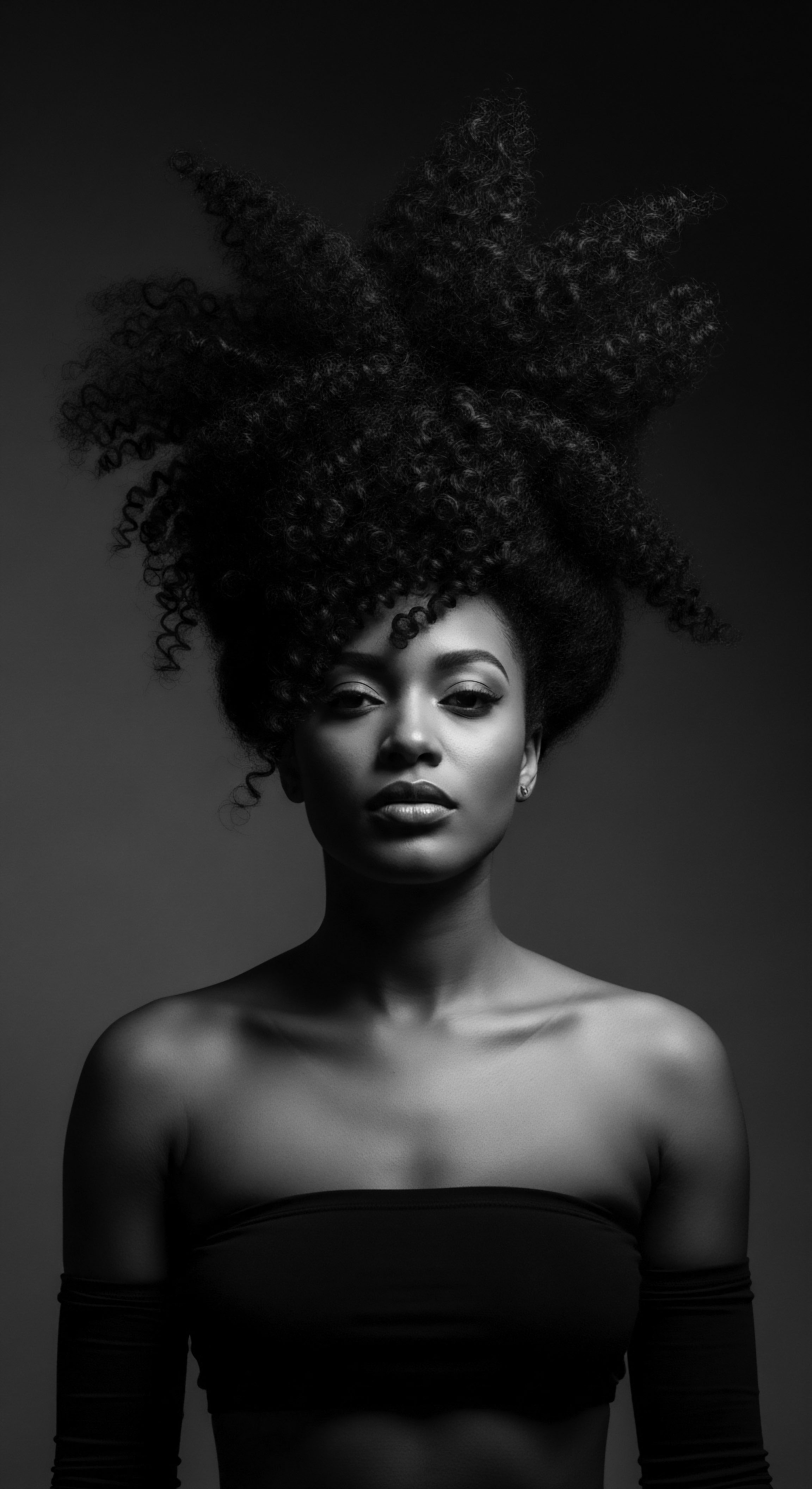
Future Trajectories and Societal Implications
The ongoing relevance of African Hair Practices extends to legal and social advocacy. Initiatives like the CROWN Act, aimed at combating hair discrimination in workplaces and schools, represent a crucial step in ensuring that the freedom to wear one’s natural hair, a direct lineage of ancestral practices, is protected. This legal framework acknowledges that hair, for Black and mixed-race individuals, is often an extension of their cultural identity and a site of historical struggle against oppressive beauty norms. The societal implications of these practices are far-reaching, influencing perceptions of professionalism, beauty, and self-acceptance.
The very definition of “beauty” is being reshaped through the continued celebration and reclamation of African Hair Practices. This involves a conscious decolonization of aesthetic ideals, affirming that coils, kinks, and waves are not only beautiful but also carry profound historical and cultural narratives. The continuous re-interpretation and innovation within these practices, from new braiding techniques to the development of specialized natural hair products, speak to a vibrant, living heritage that refuses to be confined by past prejudices or simplistic categorizations.
- De-Stigmatization of Natural Texture ❉ The ongoing work to dismantle negative stereotypes associated with coiled hair, a direct legacy of colonial ideologies, and promote its inherent beauty and versatility.
- Ethnobotanical Validation ❉ Scientific investigation into the efficacy of traditional African ingredients and formulations, validating ancestral wisdom through modern dermatological and trichological research.
- Global Cultural Exchange ❉ The increasing appreciation and adoption of African-inspired hairstyles globally, prompting important conversations about cultural appreciation versus appropriation, and the rightful acknowledgment of origin.
- Mental Wellness and Identity ❉ The psychological benefits derived from embracing one’s natural hair texture, fostering self-acceptance, and strengthening a connection to one’s ancestral lineage, countering historical narratives of inferiority.
The study of African Hair Practices, therefore, offers a deeply insightful understanding of human resilience, cultural continuity, and the profound ways in which identity is inscribed upon the body. It is a field ripe for further interdisciplinary research, bridging historical inquiry, social science, and the biological sciences to fully comprehend its complex and enduring significance.
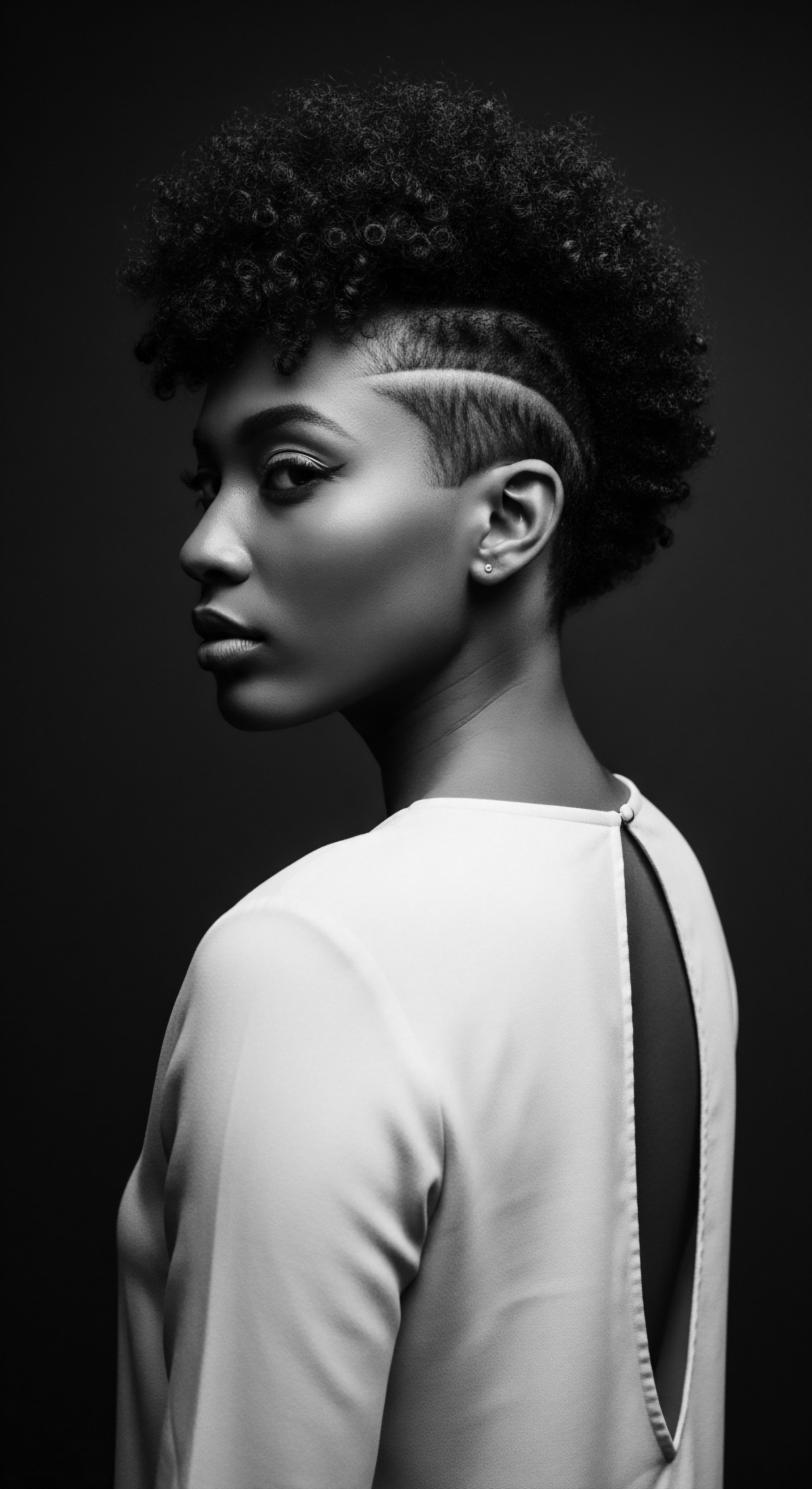
Reflection on the Heritage of African Hair Practices
The journey through African Hair Practices is truly a profound meditation on Textured Hair, its Heritage, and its Care, presented as a living, breathing archive. It is a testament to the enduring spirit of communities who, across continents and centuries, have honored their crowns as sacred extensions of self, lineage, and collective memory. Each coil, every twist, and each meticulously crafted braid carries the echoes of ancient hands, the wisdom of ancestral healers, and the quiet defiance of those who refused to let their identity be shorn away. This legacy, rich with stories of survival and celebration, continues to shape and inform the lives of Black and mixed-race individuals today, a vibrant, continuous conversation between past and present.
The “Soul of a Strand” ethos finds its deepest resonance within this context, recognizing that hair is never merely biological material; it is imbued with spirit, history, and profound cultural meaning. The meticulous care, the shared rituals, the protective styles, and the adornments all speak to a deep reverence for this inherited crown. It is a daily practice of self-affirmation, a conscious choice to honor the journey of those who came before, and a bold declaration of identity in a world that often seeks to homogenize.
The beauty of African Hair Practices lies not only in their aesthetic appeal but in their capacity to connect us to a profound, unbroken chain of wisdom, reminding us that true wellness is inextricably linked to knowing and honoring our roots. This heritage is not static; it is a dynamic force, continually inspiring new forms of expression, care, and cultural pride, ensuring that the stories held within each strand continue to be told, celebrated, and cherished for generations to come.
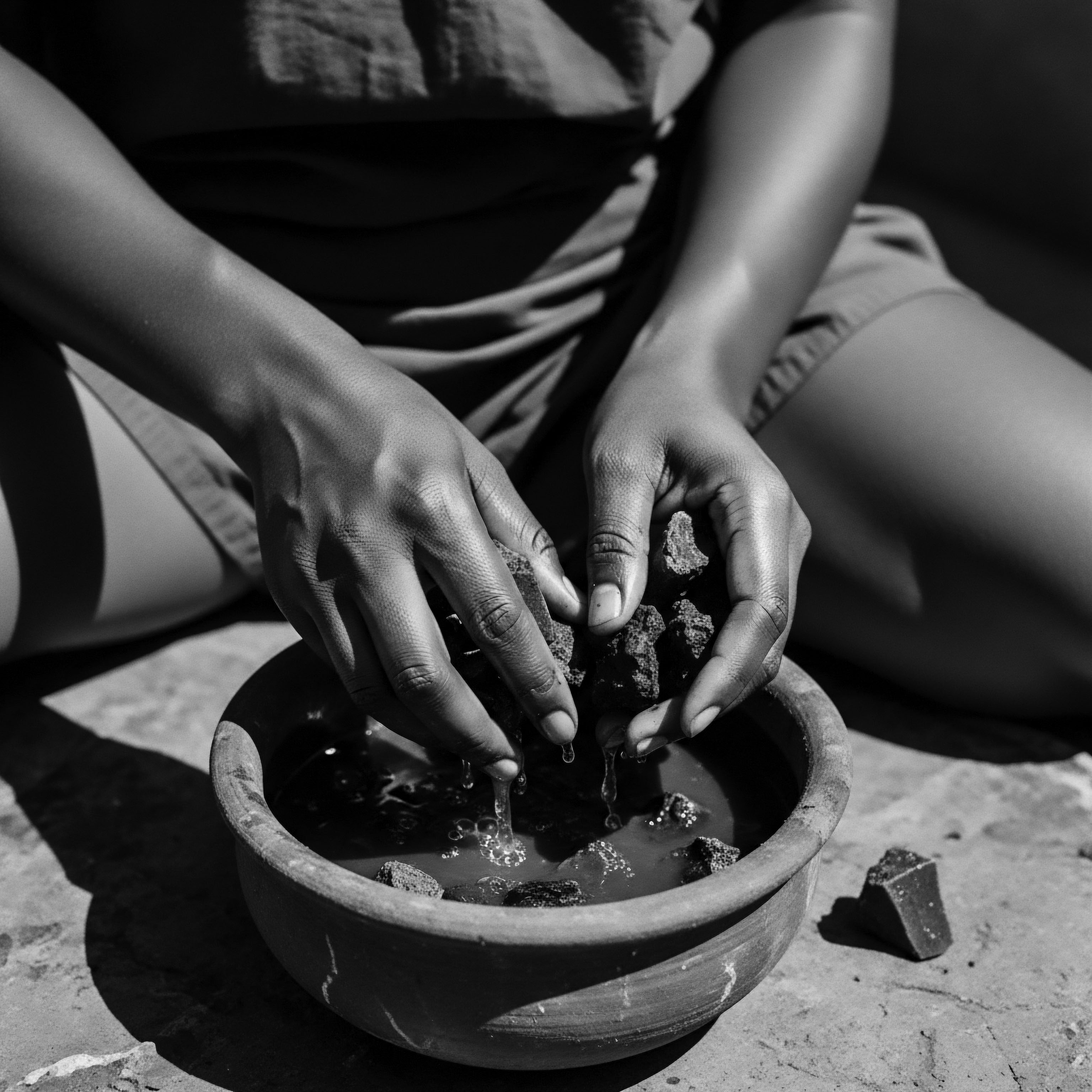
References
- 1. African Hairstyles ❉ Cultural Significance and Legacy. (2024). Afriklens.
- 2. Tshiki, N. A. (2021). African Hairstyles – The “Dreaded” Colonial Legacy. The Gale Review.
- 3. Oforiwa, A. (2023). The History and Culture of African Natural Hair ❉ From Ancient Times to Modern Trends. AMAKA Studio.
- 4. Examining the history and value of African hair. (2020). NativeMag.
- 5. The history of Black Hair. (2022). BLAM UK CIC.
- 6. African-American hair. (n.d.). Wikipedia.
- 7. Heavy is the Head ❉ Evolution of African Hair in America from the 17th c. to the 20th c. (n.d.). The Library of Congress.
- 8. Jahangir, R. (2015). How does black hair reflect black history?. BBC News.
- 9. 6 Things Everyone Should Know About Black Hair History. (2021). Odele Beauty.
- 10. Hair Care Practices from the Diaspora ❉ A Look at Africa, America, and Europe. (2025).
- 11. What Every Dermatologist Must Know About the History of Black Hair. (2023).
- 12. History, identity, and community ❉ The significance of Black hair. (2025). The Queen’s Journal.
- 13. Strands of Inspiration ❉ Exploring Black Identities through Hair. (2023).
- 14. The History of Black Hair. (2020). Creative Support.
- 15. Afro comb ❉ the cultural and political legacy behind this iconic hair tool. (2025). CURLYTREATS Festival.
- 16. African Slaves Used Braids to Communicate Escape Routes in Colombia. (2022). Ancient Origins.
- 17. Afro-texture ❉ a hair-story. (2021). Kilburn & Strode LLP.
- 18. The Afro ❉ More Than a Hairstyle. (2019). Books & ideas – La Vie des idées.
- 19. The History and Cultural Significance of African Hair Braiding. (2023).
- 20. 10 Books On the Evolution of Black Culture Through Hair. (2022). She Reads.
- 21. The History and Culture of African Natural Hair. (2024). Africa Facts Corner.
- 22. Celebrating Diversity ❉ Cultural Influences on Hair. (2024). Fix Salon.
- 23. Afro-textured hair. (n.d.). EBSCO Research Starters.
- 24. African hair tells a story and inspires the future. (2024). Kodd Magazine.
- 25. The Cultural Significance of Hair Extensions in the Black Community. (2024).
- 26. African Hairstyles Book II A Historical Hair Journey. (n.d.). Ersula’s History Shop.
- 27. Smart, M. (2014). Hair Story ❉ Untangling The Roots Of Black Hair In America. Maya Smart.
- 28. Dabiri, E. (2019). Twisted ❉ The Tangled History of Black Hair Culture. Harper Perennial.
